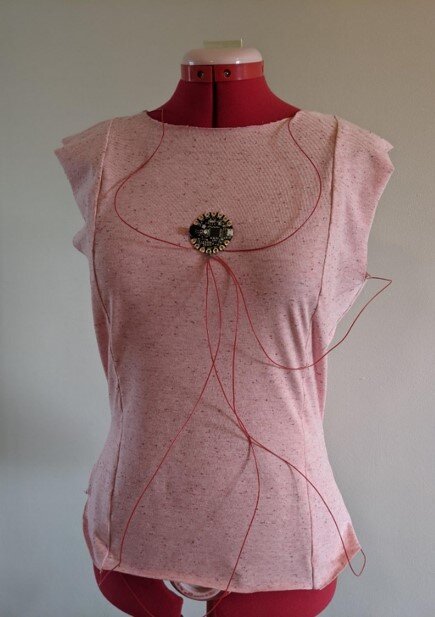Conductive seams, when strategically placed in clothing, can accurately track body motion: study

When positioned strategically, garment seams sewn with conductive yarn can be used to accurately track body motion, according to computer scientists at the University of Bath in the UK. Best of all, these charged seams are able to respond to subtle movements that aren’t picked up by popular fitness trackers, such as watches and wristbands.
In a new study, the Bath researchers found that clothing made with conductive seams can be analyzed to identify the wearer’s movements.
Ph.D. student Olivia Ruston, who presented the work at the ACM Designing Interactive Systems conference this month, said: “There are lots of potential applications for conductive yarn in any activity where you want to identify and improve the quality of a person’s movement. This could be very helpful in physiotherapy, rehabilitation, and sports performance.”
Groups of scientists have been creating flexible, textile sensors for garments for some time, but the Bath project is the first where researchers have experimented with the location and concentration of conductive seams. They found that where seams are placed on a garment, and the number of seams that are added, are important considerations in the design of a movement-tracking smart garment.
Ms Ruston says that “there’s great potential to exploit the wearing of clothing and tech—a lot of people are experimenting with e-textiles, but we don’t have a coherent understanding between technologists and fashion designers, and we need to link these groups up so we can come up with the best ideas for embedding tech into clothing.”
The yarn used by Ms Ruston and her team comprises a conductive core that is a hybrid metal-polymer resistive material intended for stretch and pressure sensing. Once incorporated into a garment’s seam, it is activated at low voltages. The resistance fluctuates as body movement varies the tension across the seams.
In the study, the seams were connected to a microcontroller, and then a computer, where the voltage signal was recorded.
Professor Mike Fraser, co-author and head of Computer Science, said that their “work provides implications for sensing-driven clothing design. As opportunities for novel clothing functionality emerge, we believe intelligent seam placement will play a key role in influencing design and manufacturing processes. Ultimately, this could influence what is considered fashionable.”
Researchers create kinetic clothes to monitor body movements
Olivia Ruston et al, More than it Seams: Garment Stitching in Wearable e-Textiles, Designing Interactive Systems Conference 2021 (2021). DOI: 10.1145/3461778.3462103
Citation:
Conductive seams, when strategically placed in clothing, can accurately track body motion: study (2021, June 29)
retrieved 30 June 2021
from https://techxplore.com/news/2021-06-seams-strategically-accurately-track-body.html
This document is subject to copyright. Apart from any fair dealing for the purpose of private study or research, no
part may be reproduced without the written permission. The content is provided for information purposes only.
For all the latest Technology News Click Here
For the latest news and updates, follow us on Google News.

